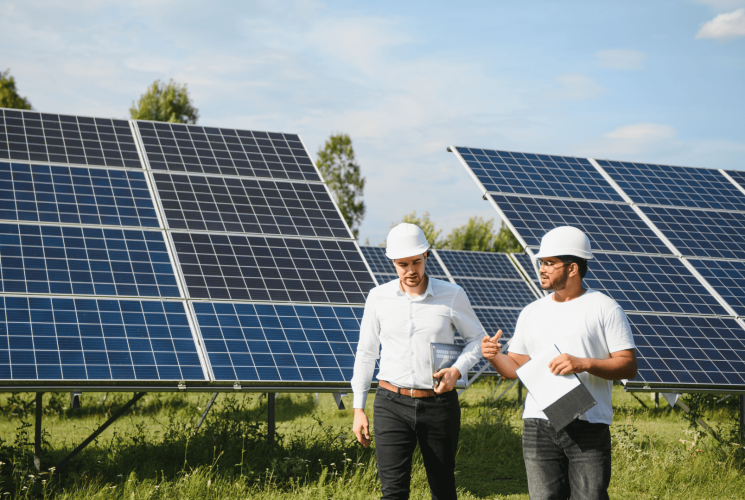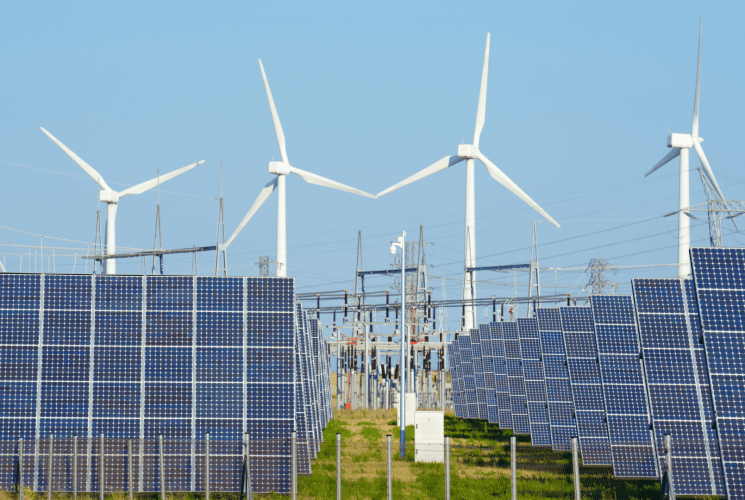How is the USA driving change with Battery Energy Storage Systems (BESS)?

Amidst a global shift towards sustainable energy solutions, the United States stands at the forefront of innovation and adaptation in renewable energy. In recent years, the battery energy storage sector has emerged as a pivotal player in the nation’s progress towards reducing carbon emissions and increasing renewable sources of power.
The Current US BESS Market
Battery energy storage systems, with their capability to store excess energy, are revolutionizing the energy sector. These systems are instrumental in integrating renewable energy sources like solar and wind into the grid, addressing the intermittency challenge and enhancing grid stability, and are becoming more and more prevalent in the US.
In 2023, the US BESS market size was estimated at USD 711.9 million and is expected to grow at a compound annual growth rate of 30.5% from 2024 to 2030. Additionally, its operating capacity grew by 7.9 GW last year, bringing the country’s total cumulative installed base to 17GW by the end of 2023.
This growth is being fueled by legislative efforts such as the Inflation Reduction Act of 2022, which is considered the most significant climate legislation in US history, and offers funding, programs, and incentives to accelerate the transition to a clean energy economy. These developments are boosting the US market for BESS and a growing number of states are incorporating or increasing BESS capacity targets in their renewable portfolio standards.
Recent developments highlight the growing importance of BESS in the US energy landscape. Only a couple of weeks ago and for the first time ever, battery energy storage became the largest source of supply in the US to power the grid as its discharge went above 6 GW. This saw battery storage overtake gas, nuclear, hydro and renewables as the biggest source of supply for a period of about two hours in the evening peak.
California & Texas
The nation deployed 4.2 GW in the fourth quarter of 2023, and installations in California and Texas accounted for 77% of fourth-quarter additions.
California takes the lead in battery storage, with the highest installed capacity of any state at 7.3 GW. It has increased its battery capacity by 1,250% over the last five years and is projected to need 52 GW of energy storage to meet its ambitious goal of 100% clean electricity by 2045. “In just five years [since the beginning of the Newsom Administration], California has increased its battery storage capacity more than tenfold,” said California Governor Gavin Newsom. “Our energy storage revolution is here, and it couldn’t come at a more pivotal moment as we move from a grid powered by dirty fossil fuels to one powered by clean energy.”
One notable project impacting California is the Moss Landing Energy Storage Facility. Located in Monterey County and with a capacity of 300 MW, it is the world’s biggest battery storage project and is set to keep that title for quite some time.
Texas follows California with an installed battery storage capacity of 3.2 GW. Texas is expected to catch up quickly with California’s progress, and developers are expected to complete 6.4 GW of new grid battery capacity in Texas this year, according to the federal Energy Information Administration.
The surge of batteries in these states highlights the fact that energy storage is an increasingly major part of the country’s transitioning electricity system. California is still forecast to end the year with more battery capacity than Texas, but if the current pace continues, Texas could surpass the Golden State as soon as 2025.
The Challenge of Raw Materials
According to the Solar Energy Industries Association (SEIA), cost and availability of raw materials is the biggest among a number of challenges that must be addressed for US-made products to meet demand for battery storage. The production of battery storage systems relies heavily on lithium, phosphorus and graphite, which are processed to form cathode and anode active materials, then used to build the battery cells. However, fluctuations in the global supply chain, along with increasing demand, have led to volatility in raw material prices and availability.
A large chunk of these materials will come from outside the US, meaning domestic manufacturers will need to compete with foreign ones, including the Chinese market, to access these materials. Another issue will be the availability of graphite, which has largely been mined in China in recent years. The US does not have any natural graphite production sites, and while some can be imported from Canada or Australia, this will likely not meet 2030 domestic demand.
However, the country broadened its federal incentive program to include domestic manufacturing through new tax credits, grants, low-cost loans, government procurement, research and development support, and public-private partnerships. For energy storage, this offers incentives to produce electrode active materials, battery cells, and battery modules. These production incentives could reduce energy storage costs by 40% or more, helping to improve US competitiveness. If factories can access raw materials at reasonable costs and enhance their production efficiency to reach 90%, these incentives could enable US batteries to be cost competitive with those manufactured in China.
The Impact on Job Opportunities
The US BESS sector employed 69,698 people in 2021, an increase of 4.4% compared to 2020. In addition, although battery storage wasn’t counted as a separate breakout category until recent years, a 2020 report was published and compiled the previous five editions’ takeaways. It noted that from 2016 to 2019 a total of 18,300 battery storage jobs were added, equaling to a growth of 38%. According to Energy Storage News, more than half of employees in the sector (53%) as of 2021 were in construction, 18% in manufacturing, 17% in various professional services roles, 11% in wholesale trade, distribution and transport and a remaining 2% categorized as providers of “other services”.
As the sector continues to evolve and expand, the demand for skilled professionals in battery energy storage is expected to remain strong, offering rewarding professional opportunities for those passionate about driving the transition to a cleaner and more sustainable future. At Climate17, we recognize the transformative potential of the battery energy storage industry and its impact on job creation. As a global renewable energy recruitment company, we are committed to connecting top talent with rewarding career opportunities in the renewable energy sector, including in battery energy storage.
Our expertise in the US renewable energy market positions us as trusted partners in navigating this dynamic industry. Whether you are a skilled professional seeking your next career move or an organization in search of top talent, we offer tailored solutions to meet your needs.
Click here to learn more about our US renewable energy recruitment services and reach out to our lovely team of experts. We are always ready to assist you.
Recent news and views
How to Build A Development Team in the USA
Build a strong development team with the right skills, culture, and strategy. Learn how US renewable recruitment works and how to attract, hire, and retain top talent in a competitive market.

Sustainability in Transition: A Changing Market, a Crowded Talent Pool, and the Value of Specialist Recruitment
Over the past 12 months, the sustainability market has entered a new era. The job market surrounding it has become more complex, competitive and in many cases, challenging to navigate for both employers and candidates.

El rompecabezas de la energía renovable en España
El apagón de 2025 en España mostró que el reto está en la infraestructura, no en las renovables. Redes inteligentes, almacenamiento y flexibilidad serán claves para un futuro energético limpio y resiliente.

How to Build A Development Team in the USA
Build a strong development team with the right skills, culture, and strategy. Learn how US renewable recruitment works and how to attract, hire, and retain top talent in a competitive market.

Sustainability in Transition: A Changing Market, a Crowded Talent Pool, and the Value of Specialist Recruitment
Over the past 12 months, the sustainability market has entered a new era. The job market surrounding it has become more complex, competitive and in many cases, challenging to navigate for both employers and candidates.

El rompecabezas de la energía renovable en España
El apagón de 2025 en España mostró que el reto está en la infraestructura, no en las renovables. Redes inteligentes, almacenamiento y flexibilidad serán claves para un futuro energético limpio y resiliente.

Sign up to our newsletter
Jobs, insights, resources and more. A monthly update, straight to your inbox.





